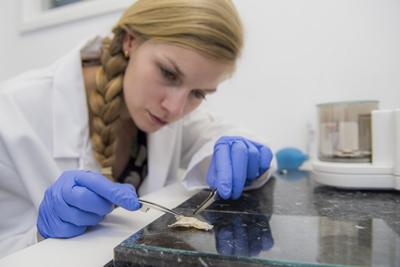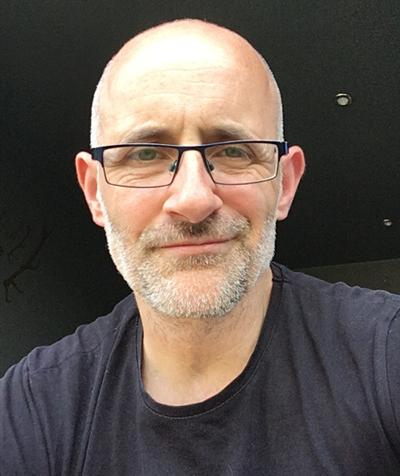Mapping the future of sea life conservation

Katie St John Glew, SMMI supported postgraduate research student within Ocean and Earth Science is hoping that her work will lead to the improved conservation of sea birds and the prevention of illegal fishing.
Using jellyfish to create chemical maps
Katie is investigating the foraging behaviours of marine life. Using isotopes (variants of chemical elements) measured in jellyfish, she is making chemical maps of the UK shelf seas.The chemical composition of tissues of different marine animals (or animal products) can then be compared to these maps to identify their most likely recent foraging and catch locations. This will allow her to identify where fish were caught across the shelf, helping organisations and fisheries to verify the catch locations of fish and manage stocks more easily.
Once these maps – or isoscapes – are fully developed, scientists can collect isotopes from samples taken from seabirds and fish and compare the values to the reference isoscapes to learn more about their movements, habits and catch locations. Katie’s isoscapes are focusing primarily on the North Sea, and her team – including supervisor Dr Clive Trueman, Associate Professor in Marine Ecology – are the first to focus their attention on the UK shelf sea area.
Saving our sea birds
Tracking sea life in this way will help us to understand more about the habits of birds including puffins, guillemots and razorbills from Scotland’s Isle of May. Little is known about these birds and their movements during the winter. Although they breed on land in the summer months, in winter they fly out to sea to moult and regrow their feathers, leaving them vulnerable. Declines in their numbers means tracking and mapping their movements is ever more important.
By assessing the isotopes in their feathers upon their return, scientists can find out where they were feeding during the winter, therefore understanding more about their movements and how best to move forward with conservation.
Sustainable fishing and the revival of North Sea cod
The North Sea is not just a primary focus for seabird conservation. In July 2017 it was announced that North Sea cod is recovering from overfishing, after being under threat for more than a decade.
The techniques being created and used by Katie and her team are becoming more important now that the North Sea is being opened up again for cod fishing, and with the potential legislation and trade changes that Brexit may bring.
Using isoscapes to assess the catch location of fish was a focus for Katie in her presentation for the University’s Three Minute Thesis (3MT) final. Ensuring that fish are being caught legally and sustainably is as much about maintaining trust as it is about being an environmentally-conscious consumer.
“We will be able to tell the difference between Norwegian-caught cod, Iceland-caught cod and North Sea-caught cod. If it says North Sea cod, we need to be able to verify that it is correct, so that people are confident in what they are buying.” Katie says.
Clive Trueman adds: “Katie’s work is part of a larger research focus here at the University of Southampton Ocean and Earth Science, where we are using natural chemical signals to understand how animals move through the world’s oceans, and how energy and nutrients flow through marine food webs.
“Katie’s work is particularly exciting as her results have immediate practical applications for conservationists, fishers and consumers.”
